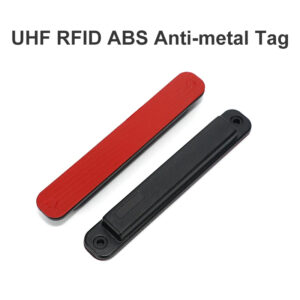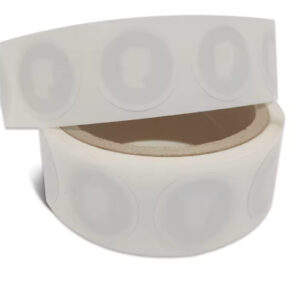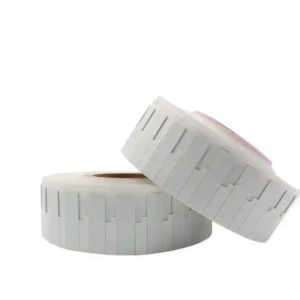Ntag213 NFC Inlay Dia25mm
RFID NFC Inlays come in two types, wet and dry. A wet RFID NFC inlay comes with a sticky backing, while a dry one does not. They provide a tag option operating at 13.56 MHz specifically designed for original equipment manufacturers (OEMs). Both ISO 15693 and 14443 NFC memory chips are available for these inlays.
Simply speaking, RFID dry inlay is a combination of RFID chip and antenna. It could be used for making NFC sticker, RFID label, RFID ticket and various of RFID tags.
Antenna of dry inlay is aluminum etching, which is thinner with comparing to copper coil. Shape of antenna could be customized and redesigned on demand.
RFID dry inlay added with an adhesive is called wet inlay. It could be used as a RFID label or NFC sticker directly if you do not need any printing on the surface. Being sticked on the objects can save costs and achieve the same purpose. It’s also widely applied in making RFID tags. Antenna of wet inlay is aluminum etching, which is thinner with comparing to copper coil. Shape of antenna could be customized and redesigned on demand.
Ntag213 NFC Inlay Dia25mm
This specification describes an Ntag213 NFC Inlay with a diameter of 25mm. It is a dry inlay, meaning it does not have an adhesive backing and requires additional steps for attachment to an object.
Key Features:
- Chip: Ntag213
- Diameter: 25mm
- Type: Dry Inlay
- Protocol: ISO/IEC 14443 Type A
- Frequency: 13.56 MHz
- Memory: 144 bytes
Advantages:
- Cost-effective: Ntag213 is a widely-used and affordable NFC chip.
- Versatile: Suitable for a wide range of applications due to its memory size and functionality.
- Durable: Dry inlays offer better durability compared to wet inlays.
- Customizable: The antenna can be customized for specific applications.
Applications:
- Access control: Key cards, RFID badges, and other secure access systems.
- Asset tracking: Tracking inventory, equipment, and other valuable assets.
- Marketing and advertising: Interactive posters, promotional materials, and loyalty programs.
- Payment systems: Contactless payment cards and mobile wallets.
- Data storage: Storing small amounts of data, such as product information or serial numbers.





